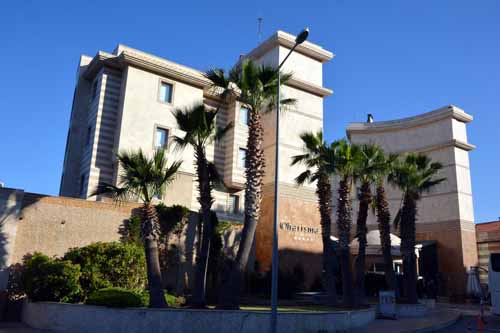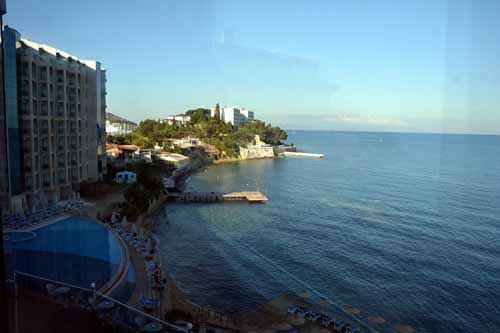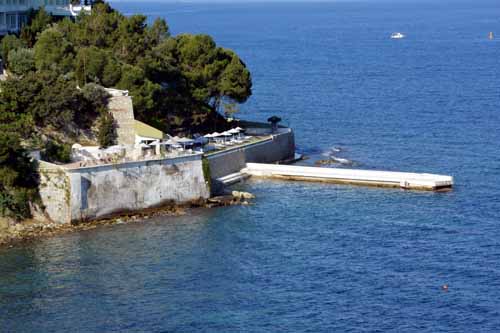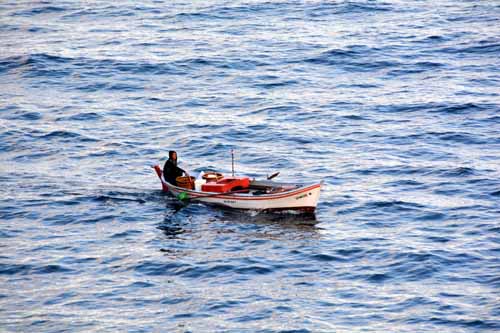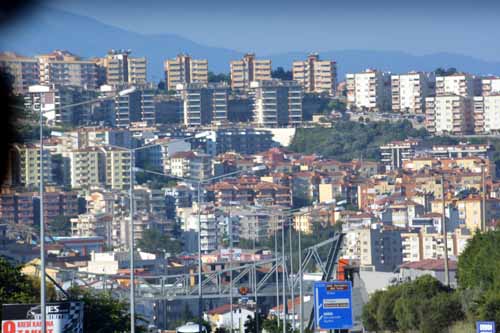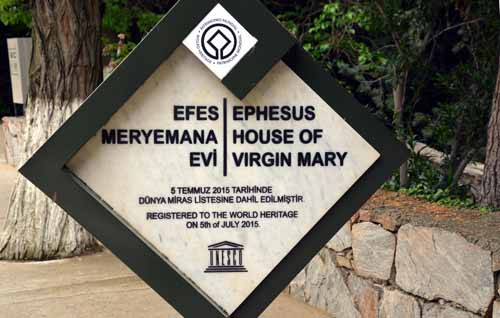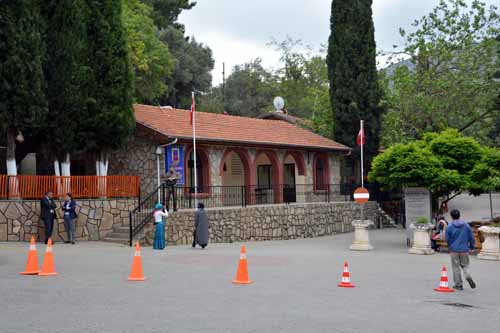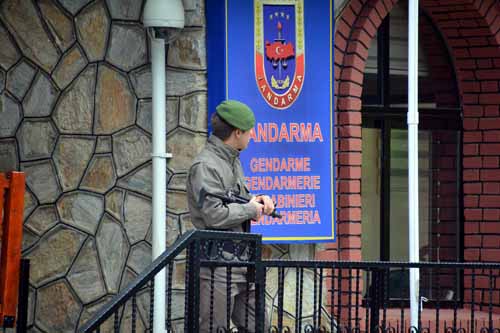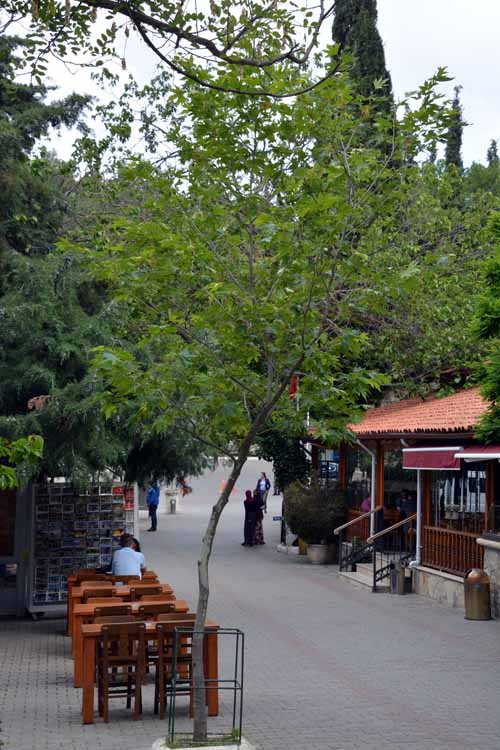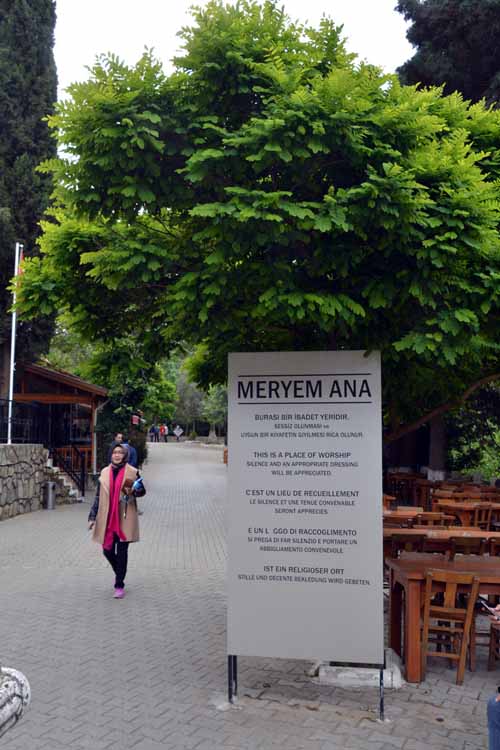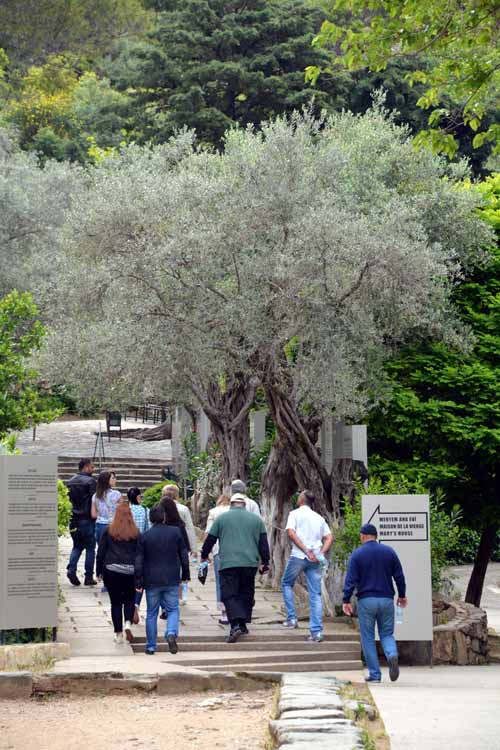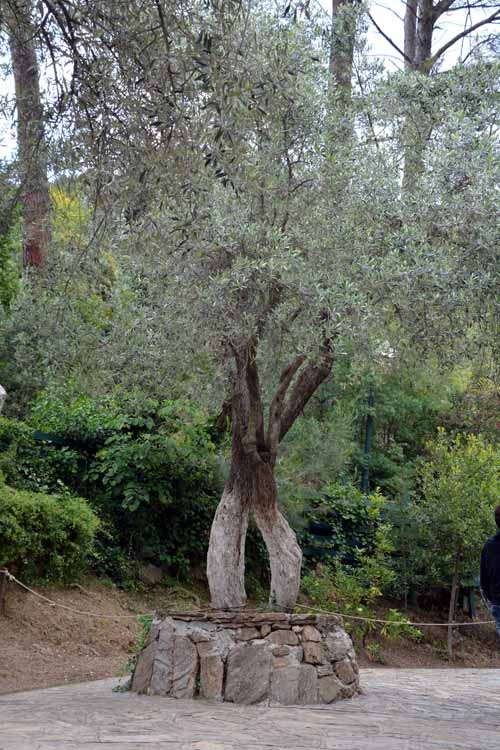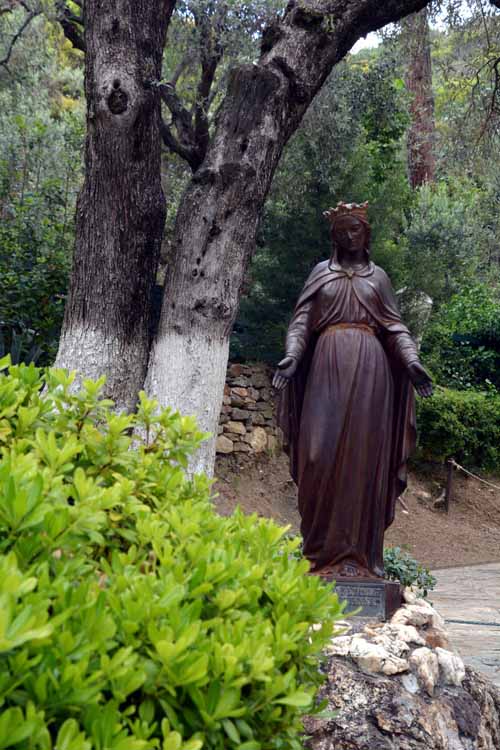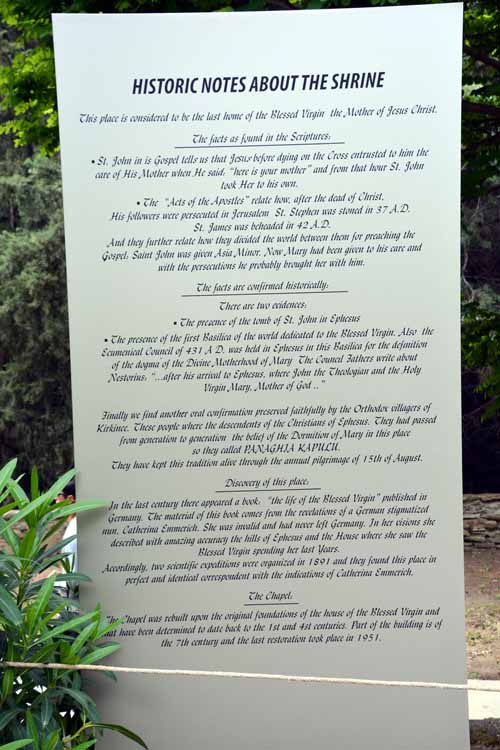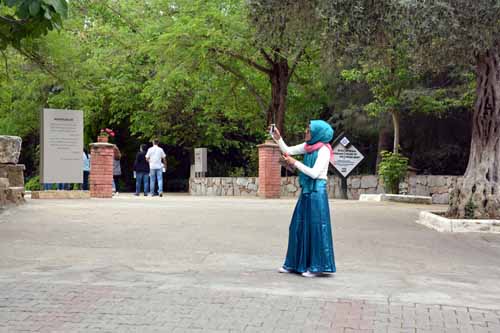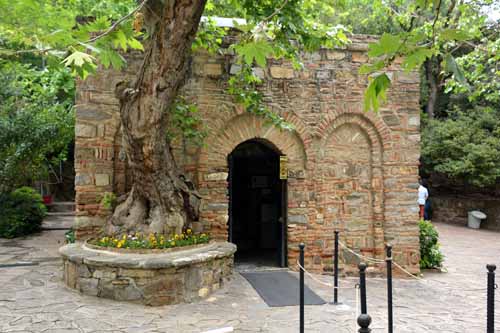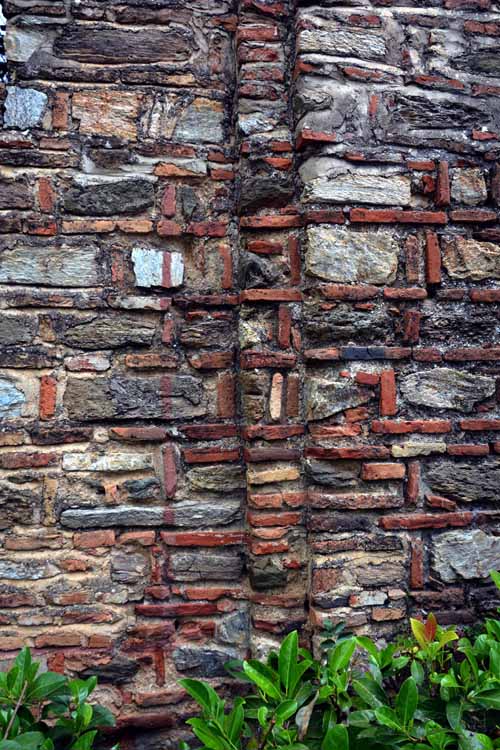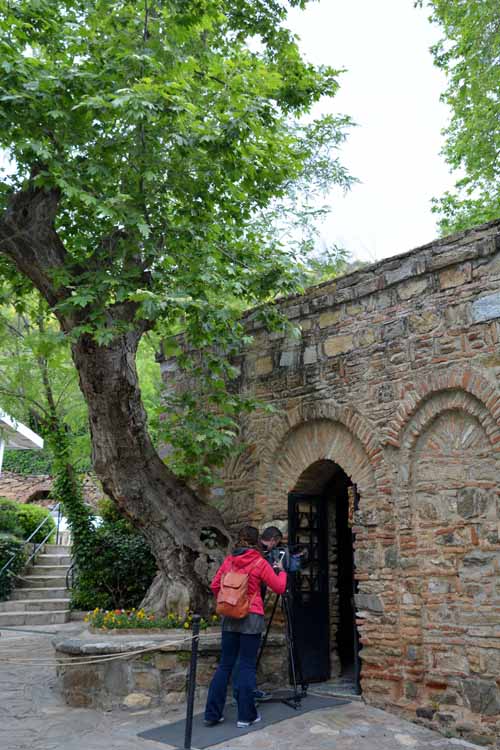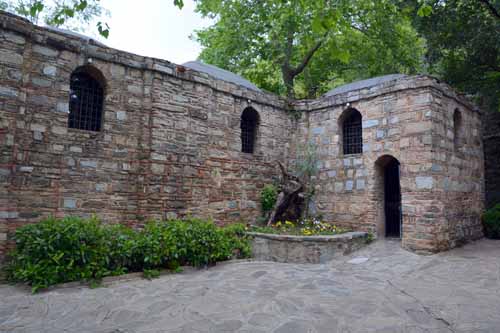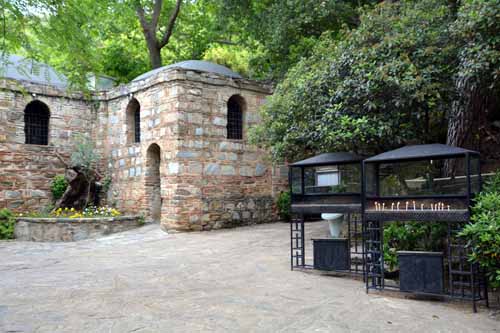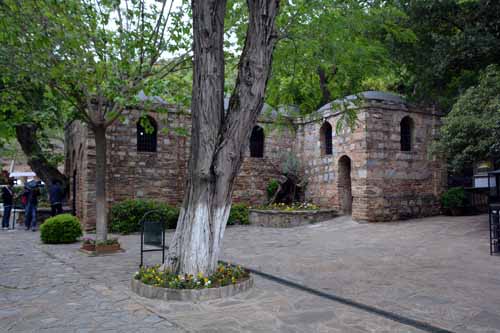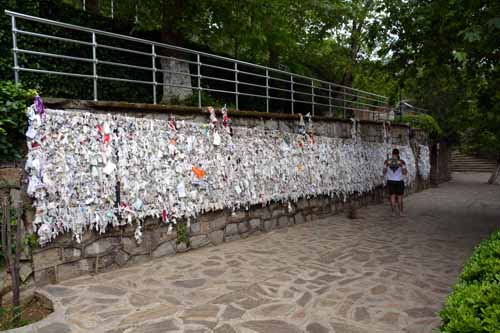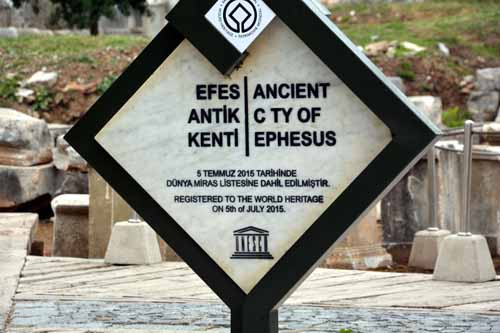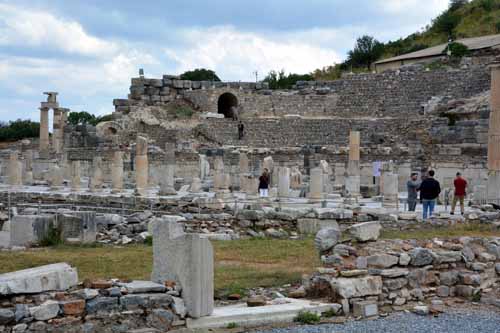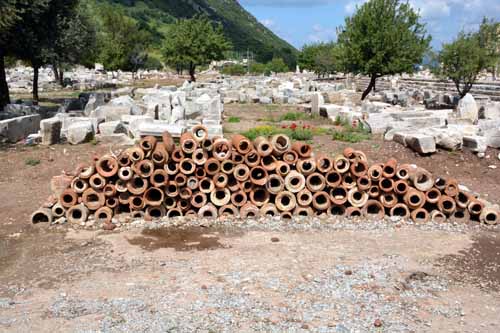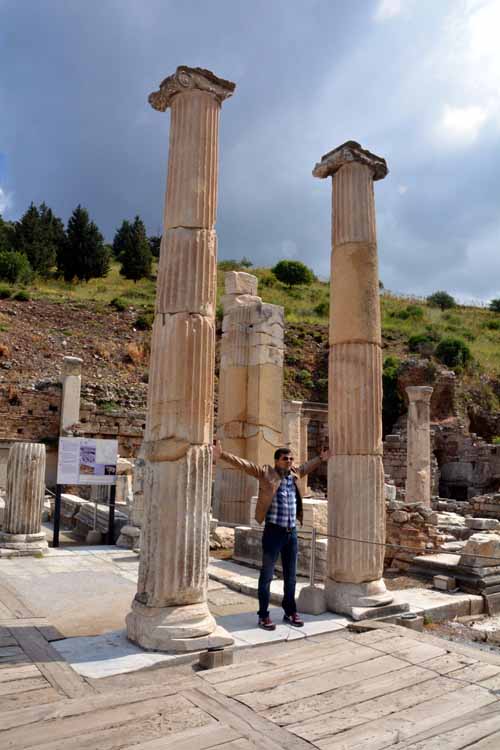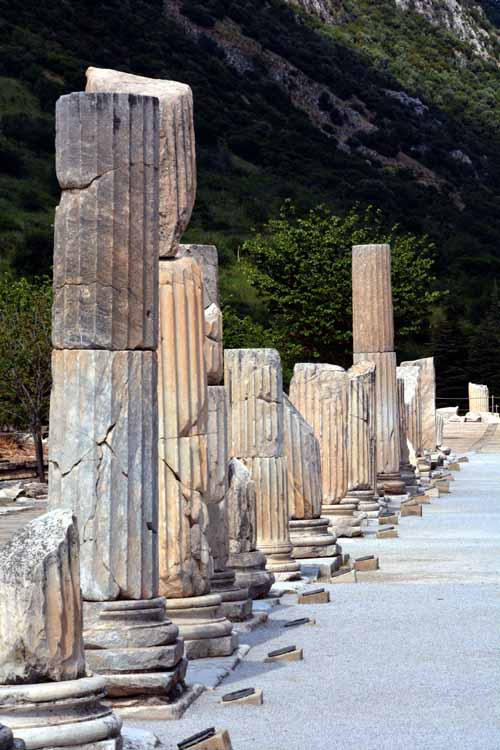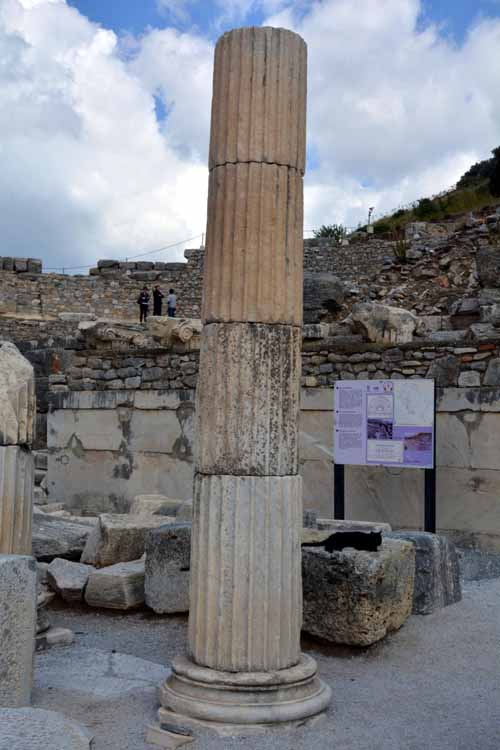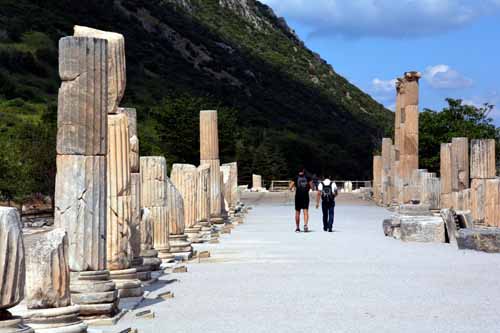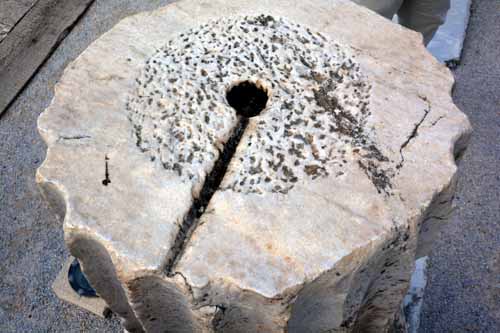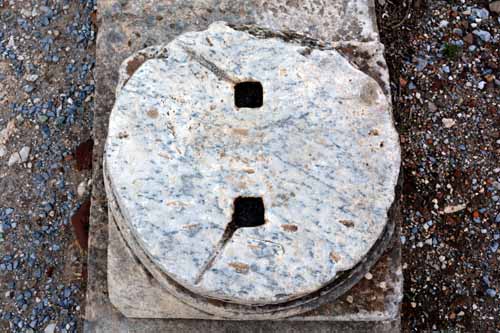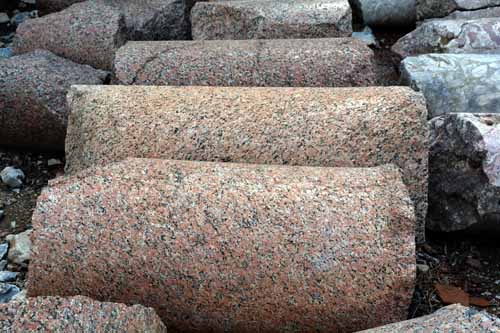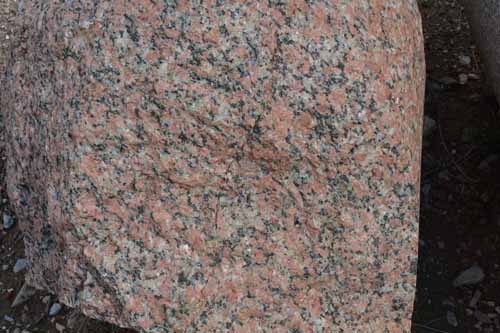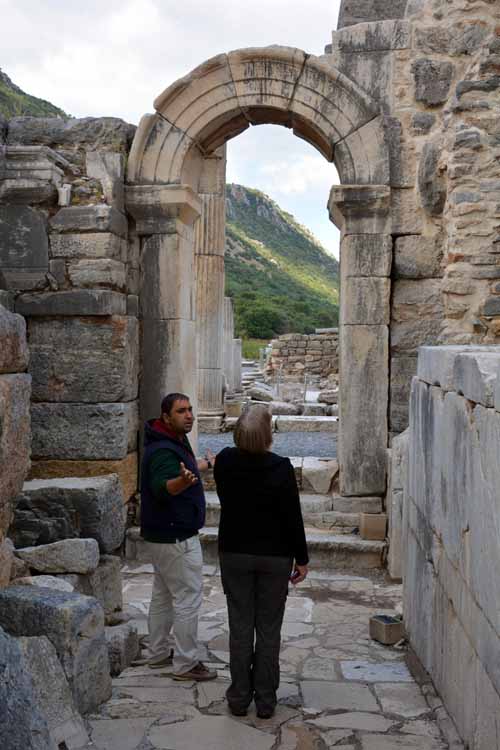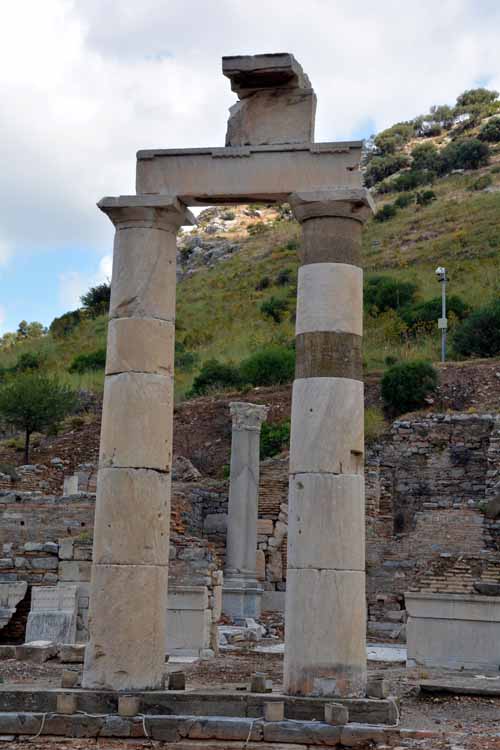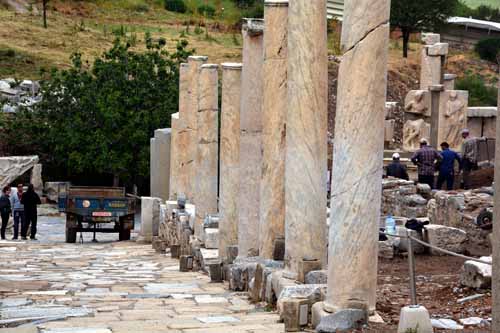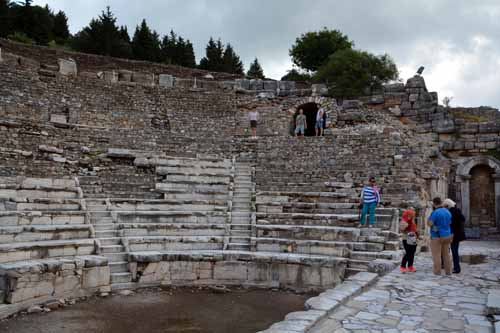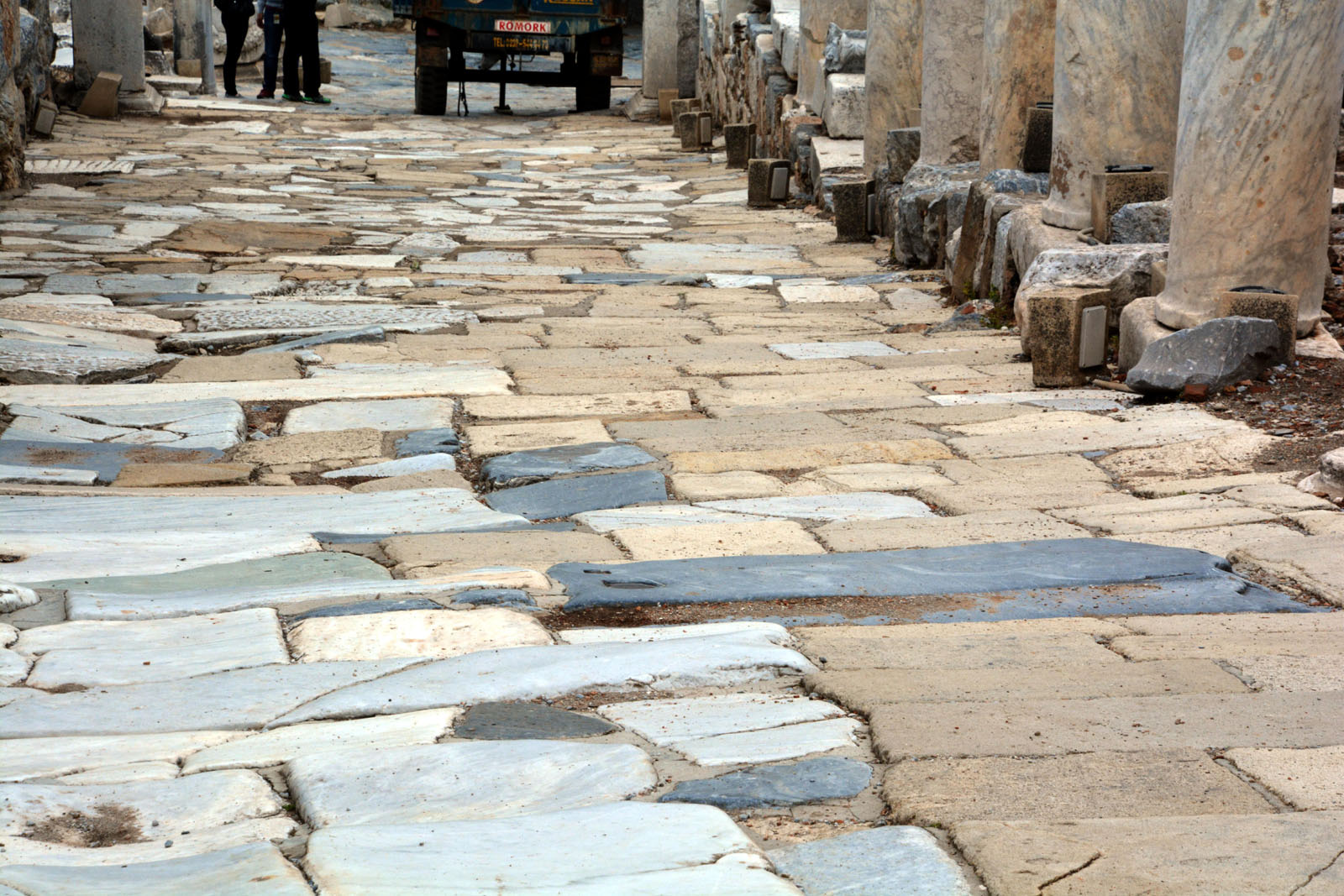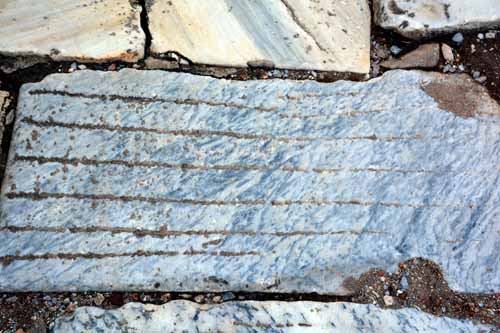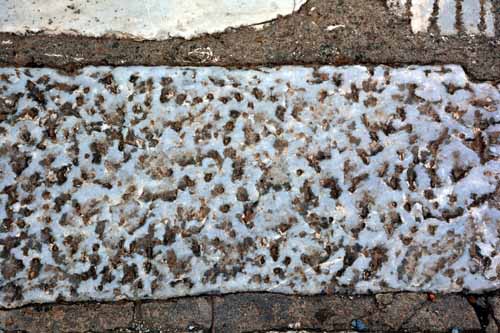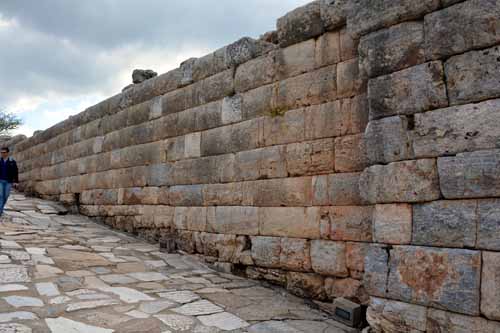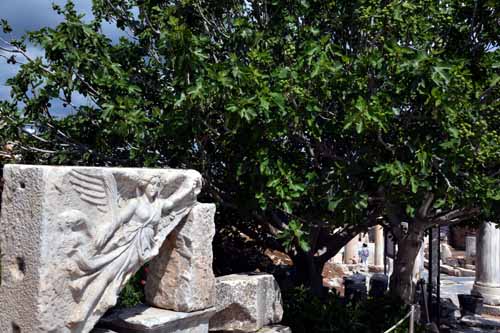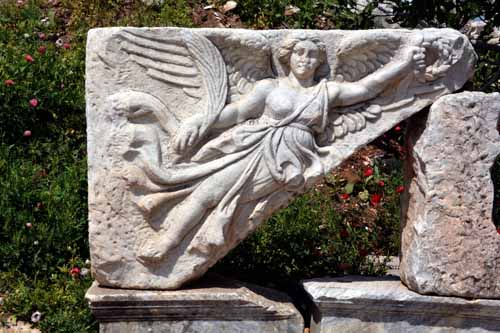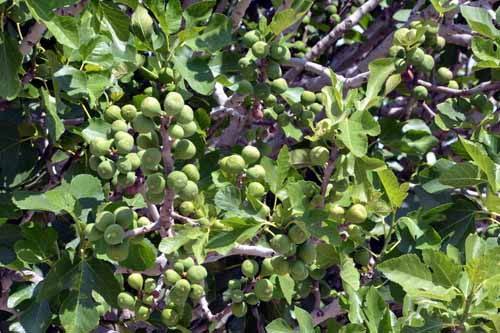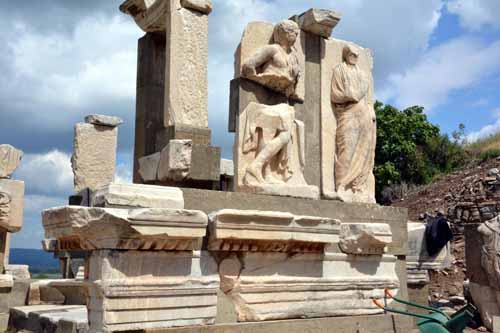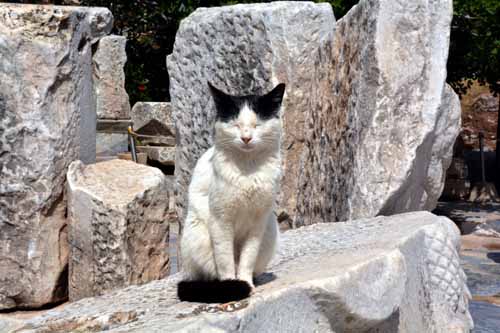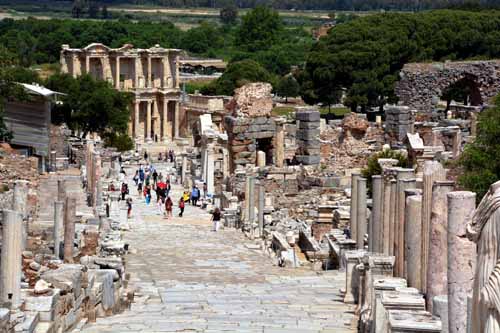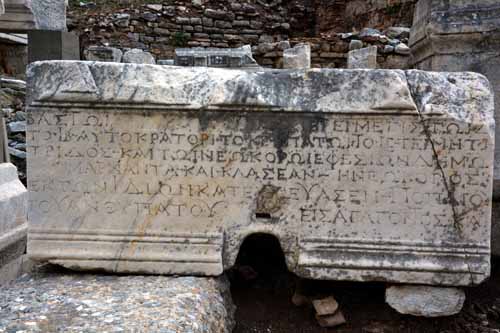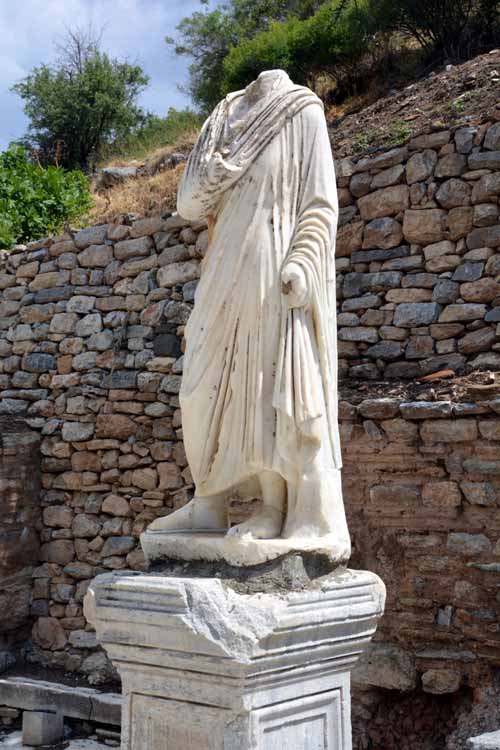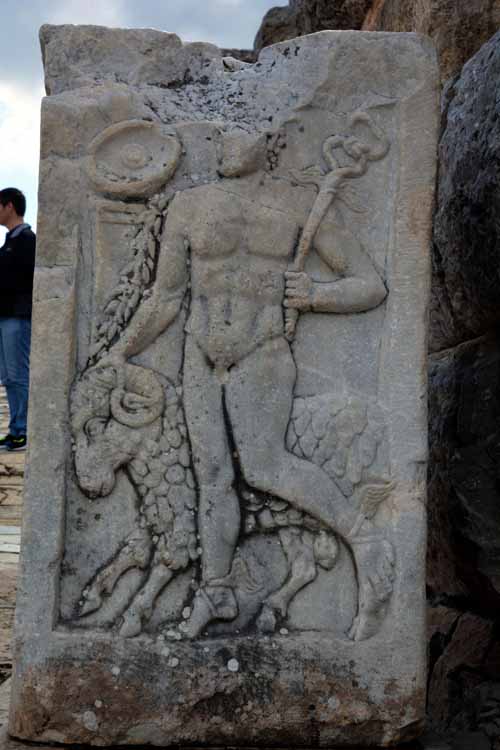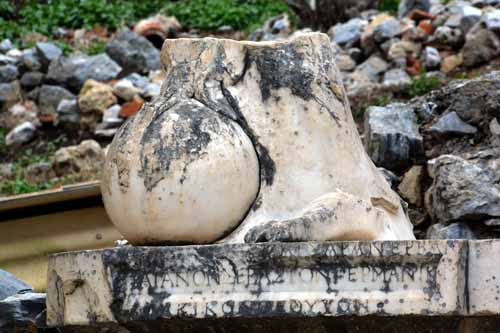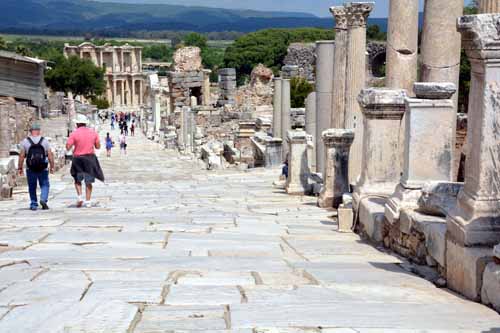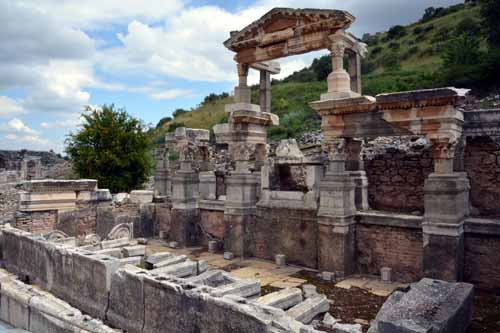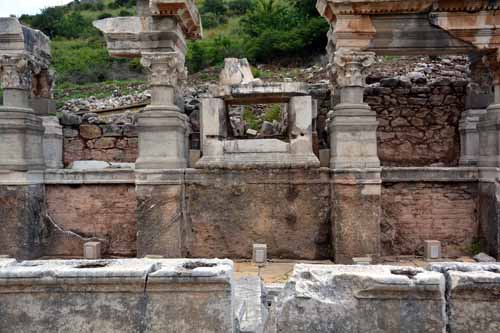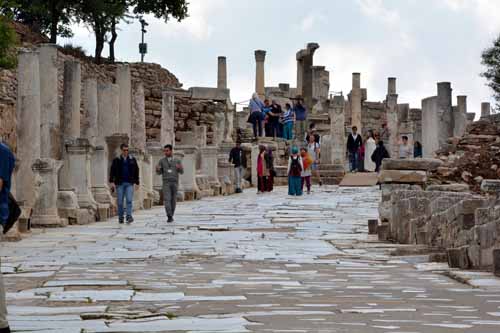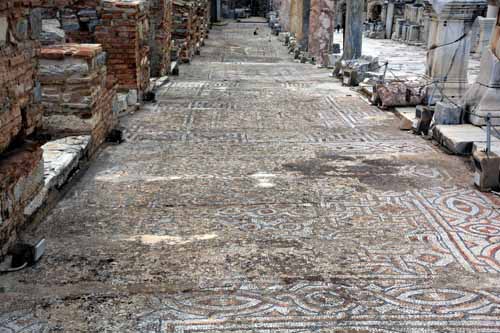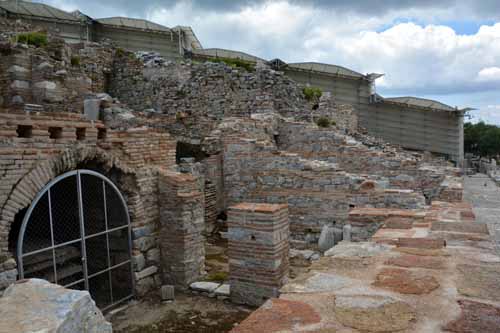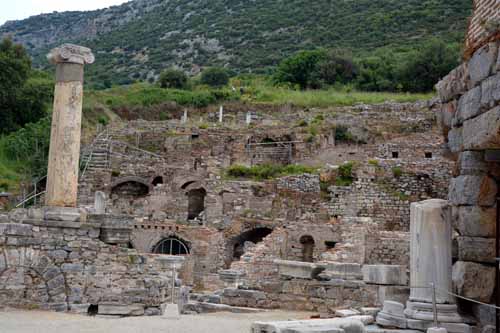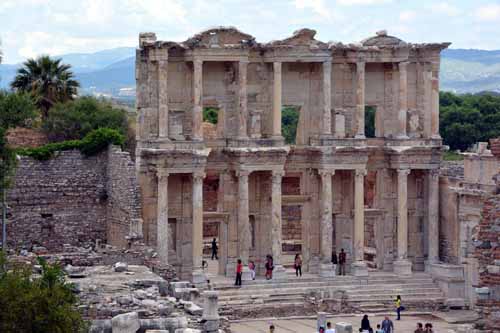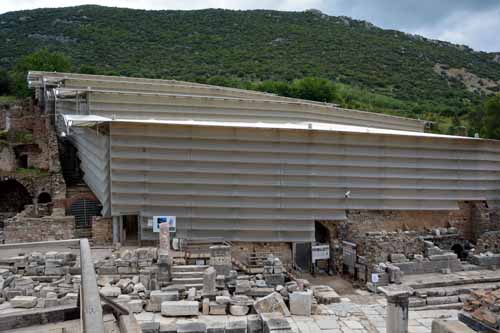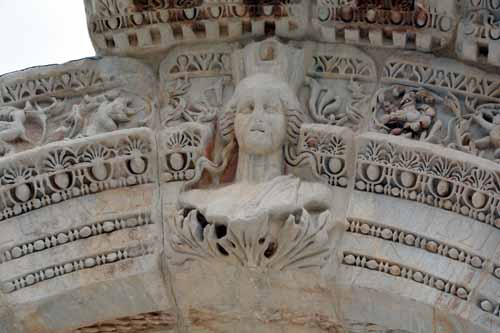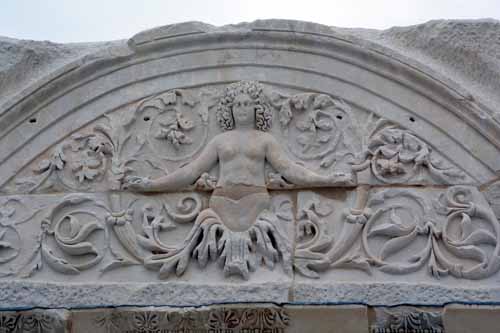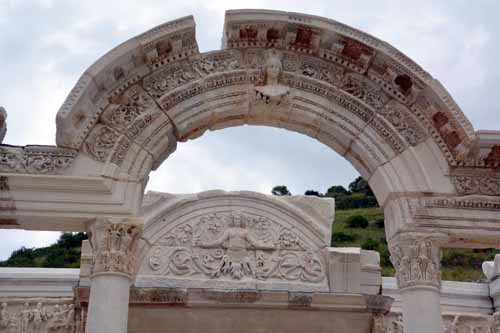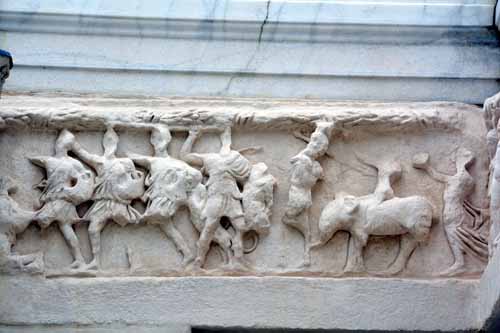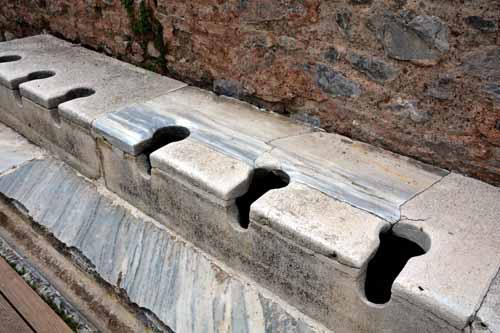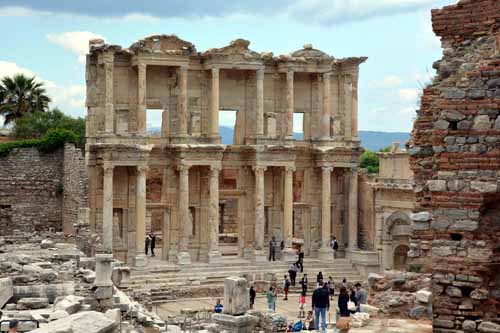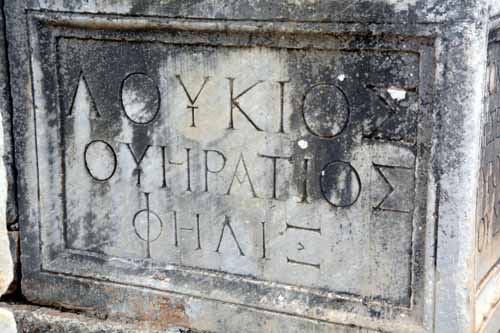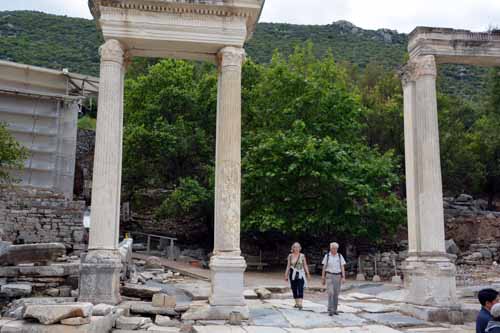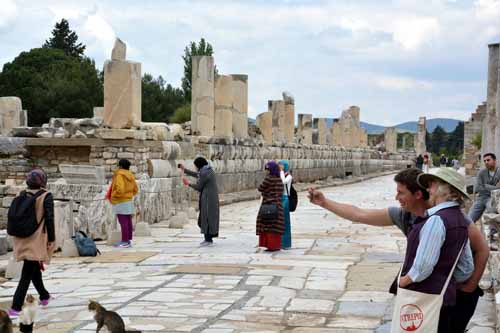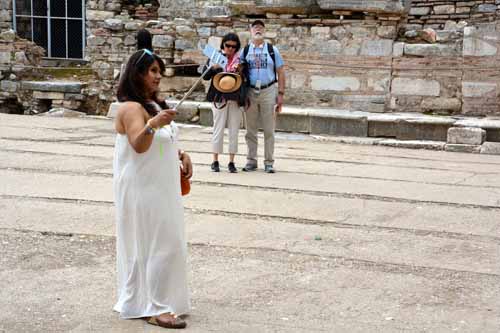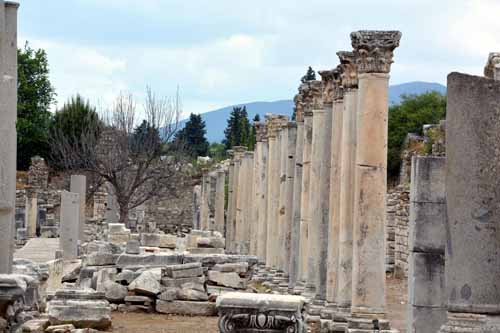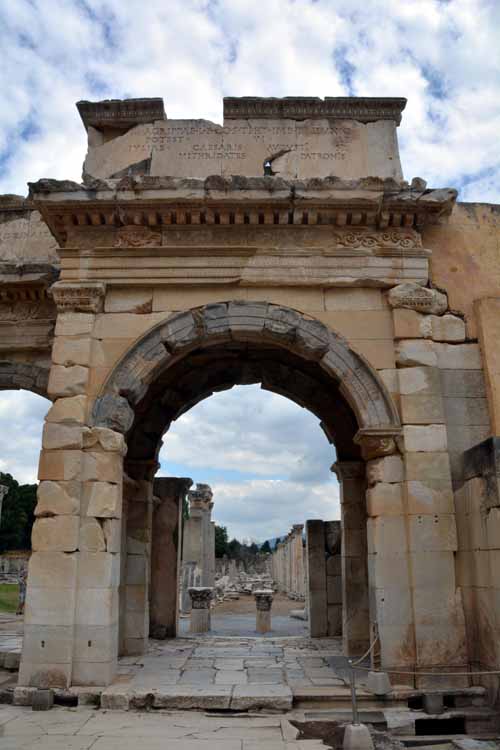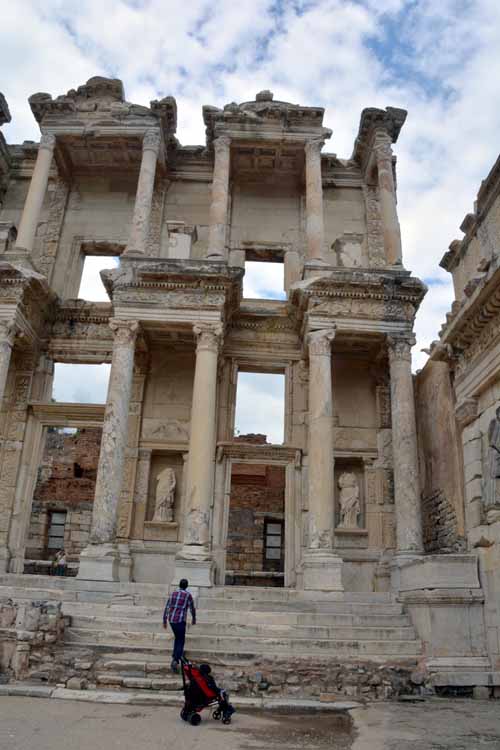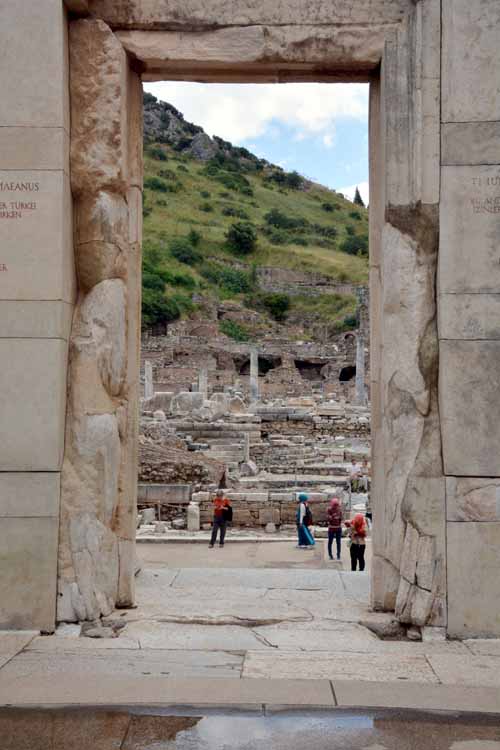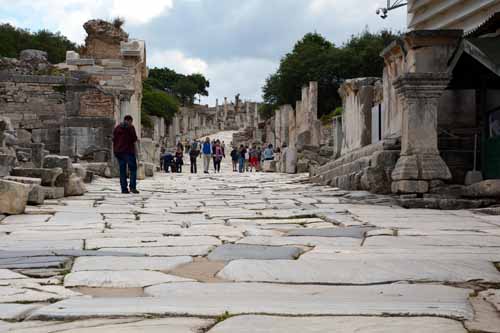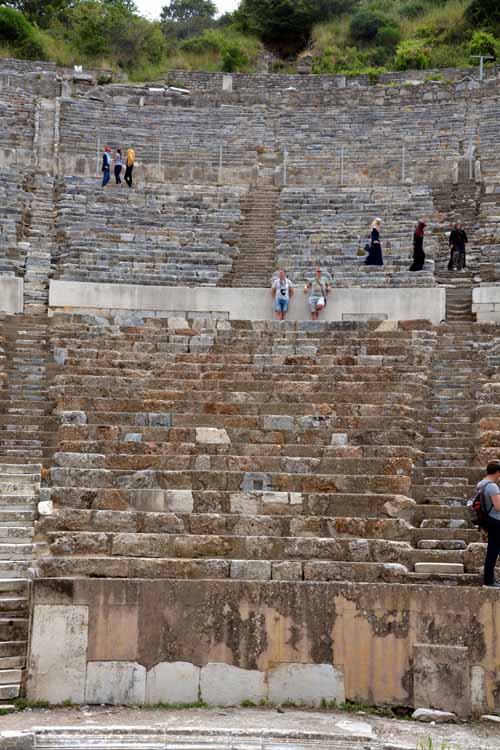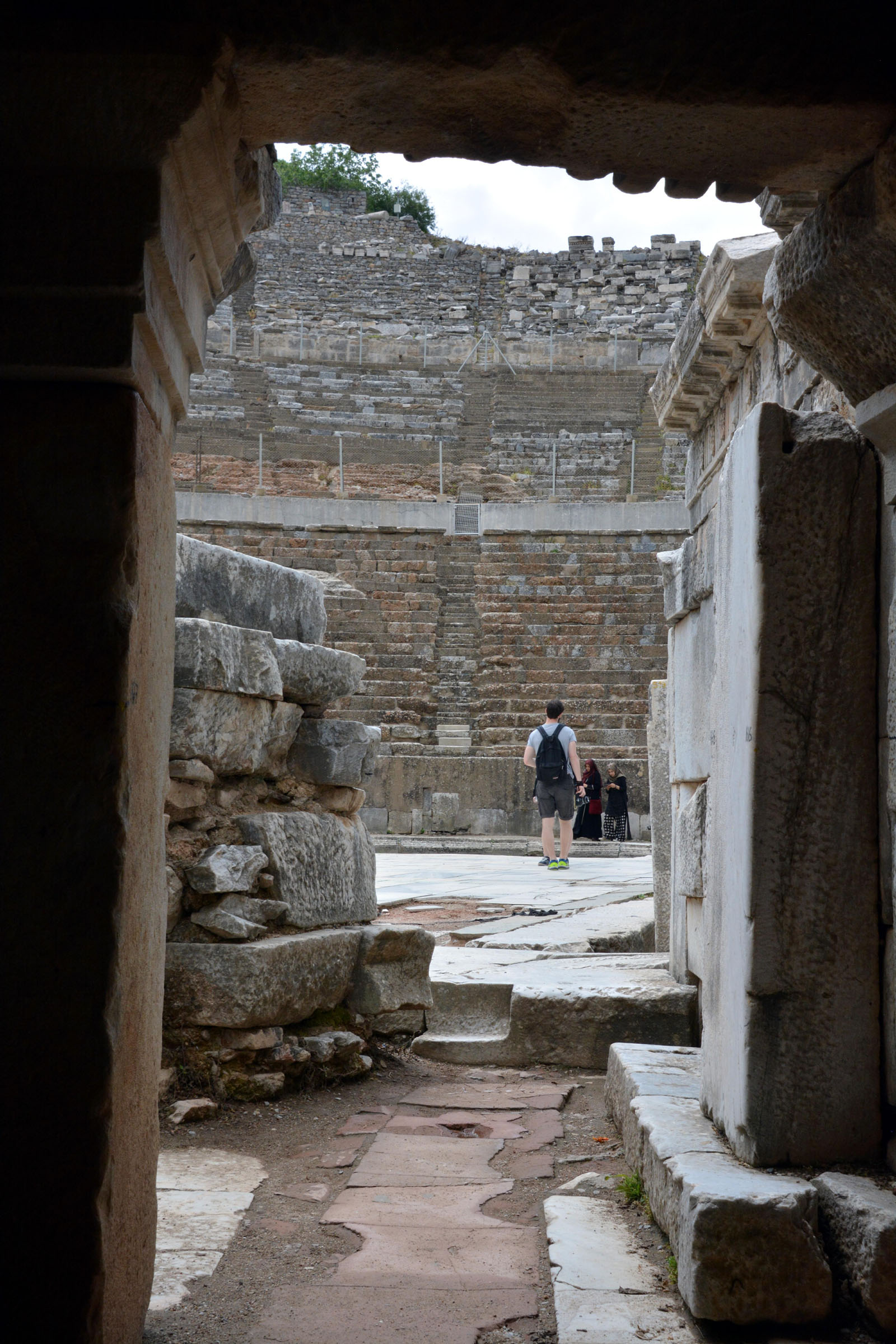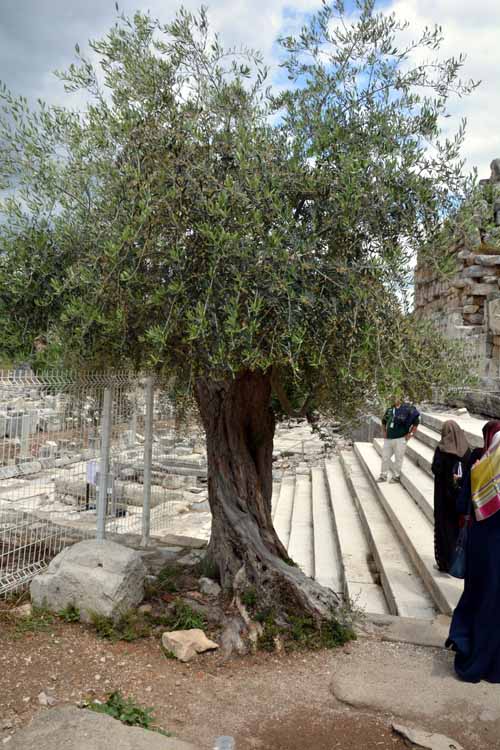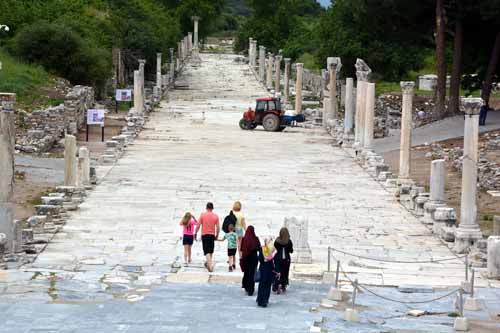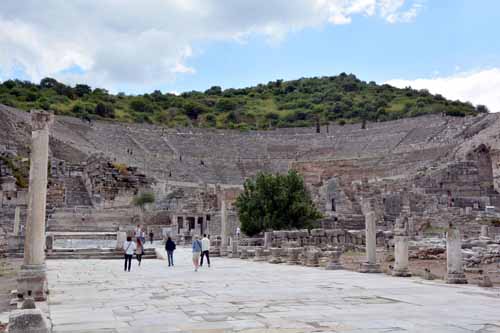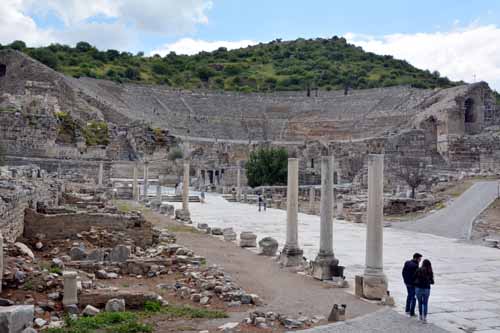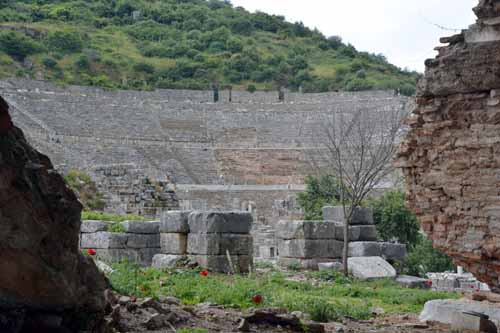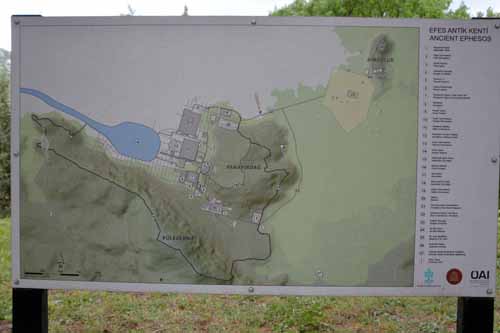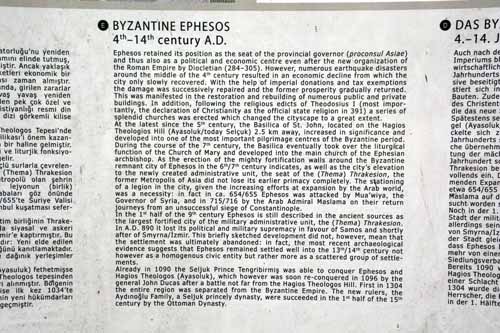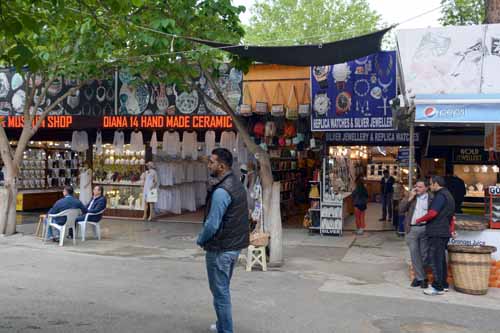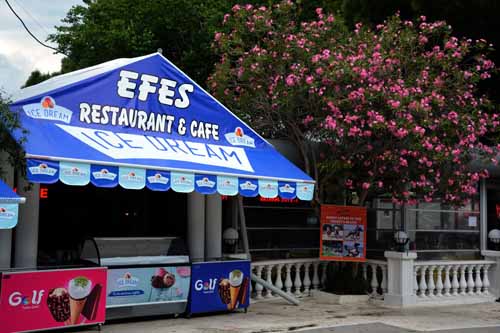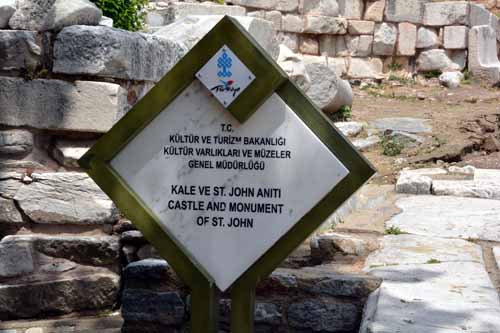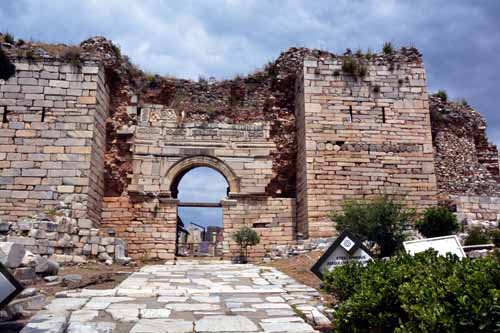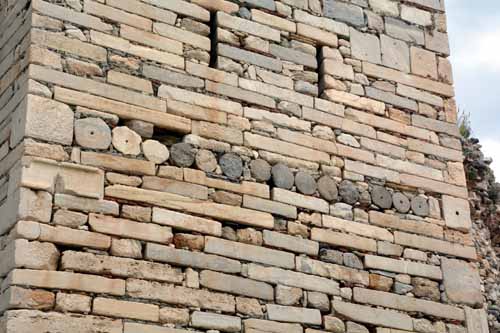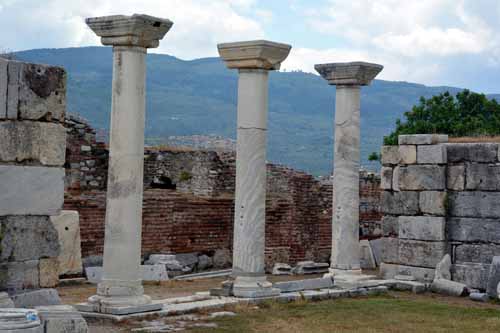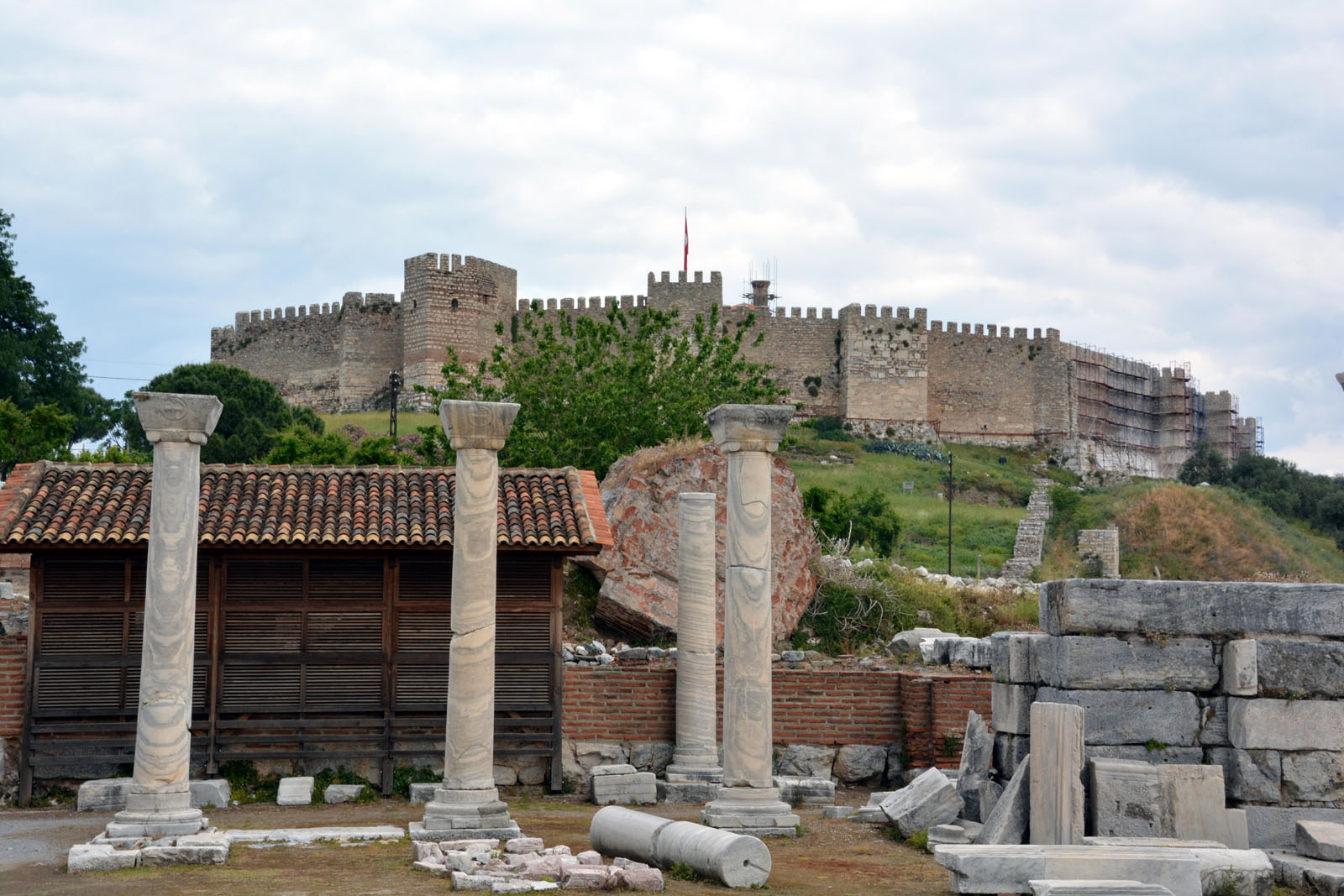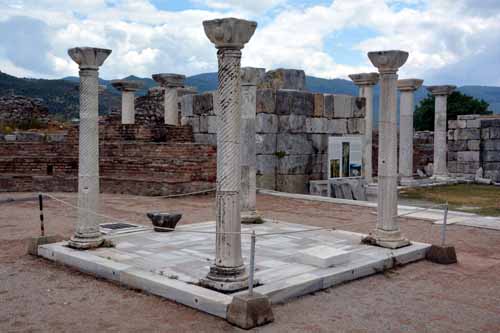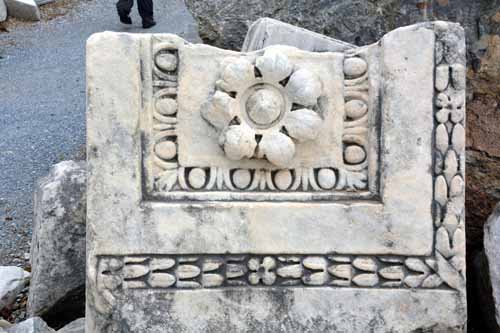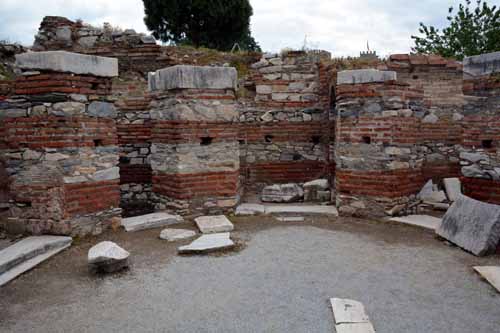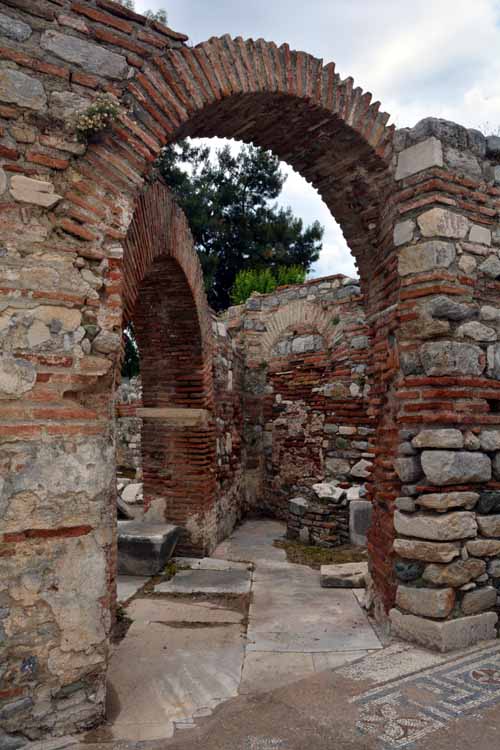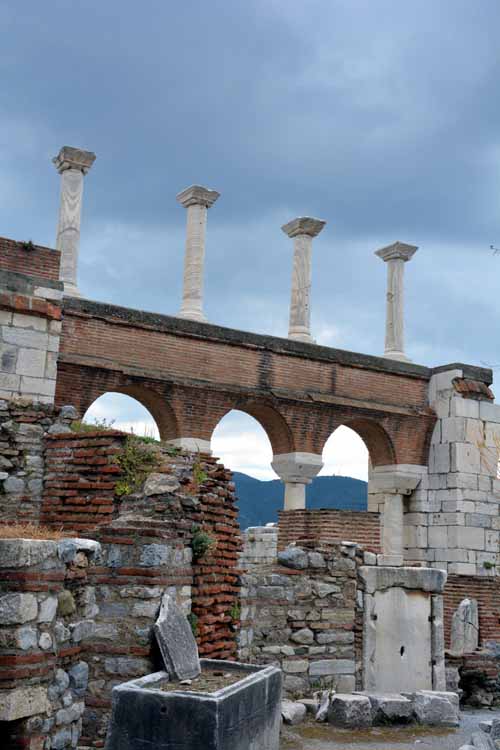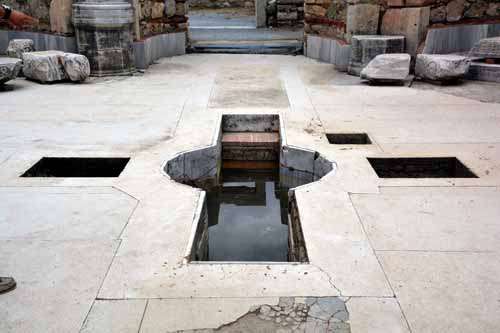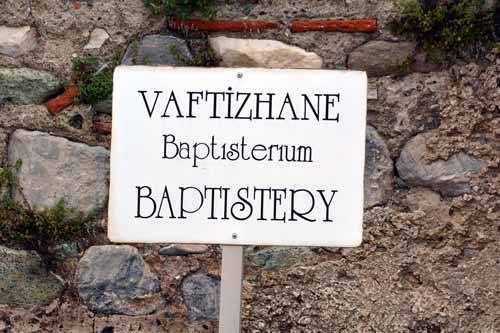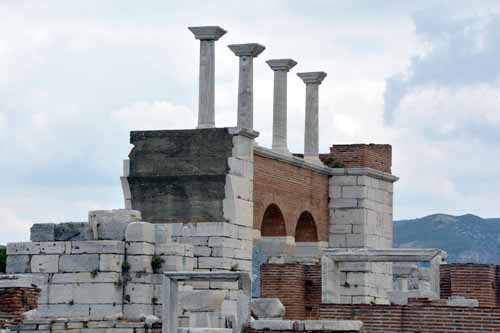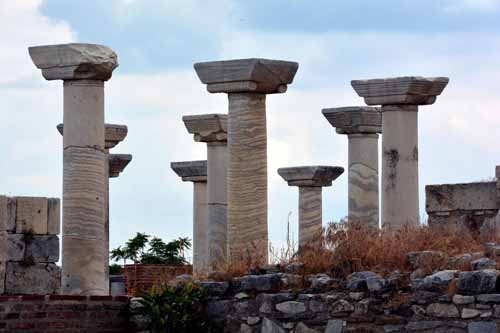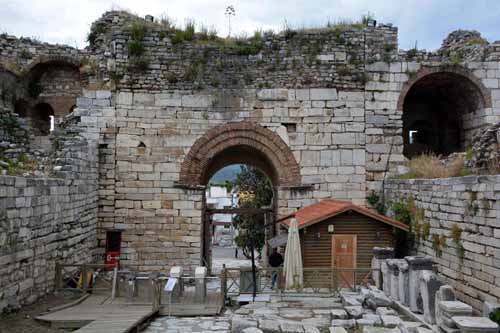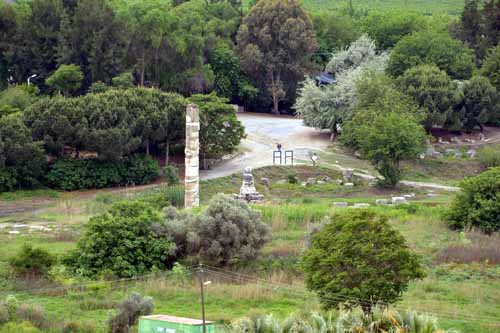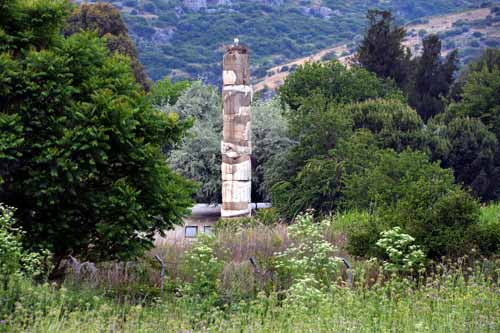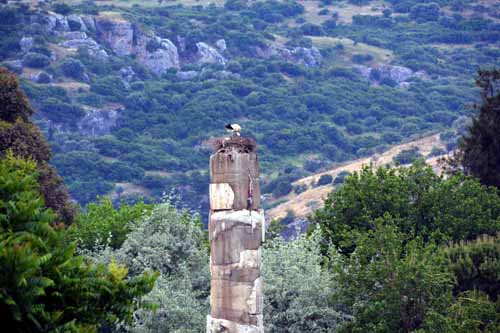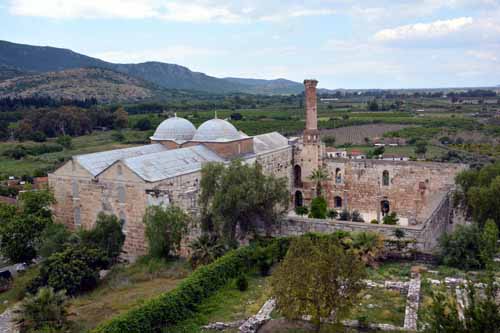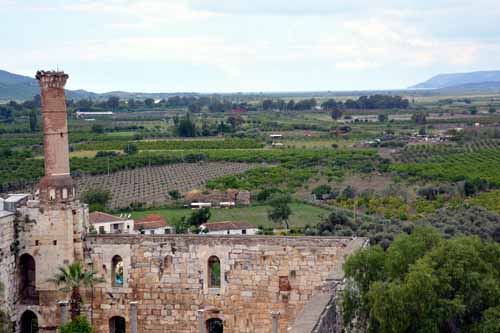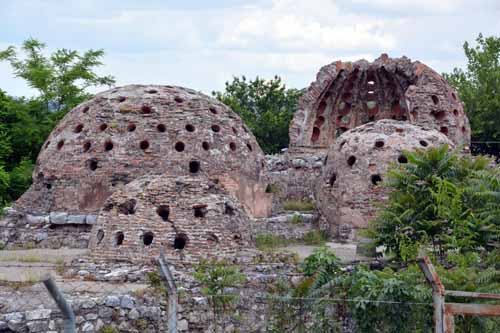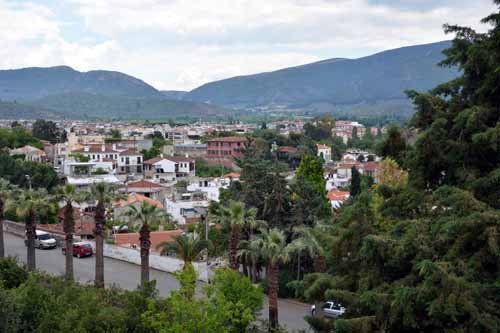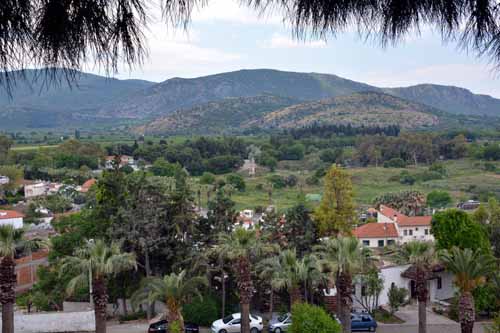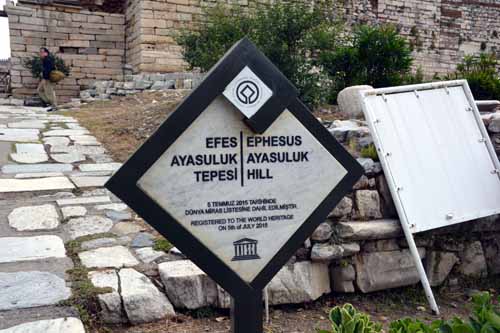Crete Pilgrimage 2016 - Day 15Turkey - EphesusIntroductionWe woke up in our new hotel in Kusadasi in the west of Turkey, and south of Istanbul. The hotel was on the coast but it was dark when we arrived so we had not seen the view... wow! After a wonderful breakfast we were met by our new guide and headed off to Ephesus. Ephesus is an ancient Roman city, once a thriving port but now in ruins. A series of earthquakes and the silting up of the port forced the Romans to move elsewhere. We spent most of the day in this area, taking in the ancient history, and find out what had happened to one of the Seven Wonders of the Ancient World - the Temple of Artemis.
Ephesus - House of the Virgin MaryOur first stop was for the House of the Virgin Mary. Nobody really believes that Mary lived here in her later years, but it makes a good story, attracts the tourists, and for many believers it is a case of hedging you bets - maybe she did live here so visiting cannot do any harm and just might do us good. The Ancient City of EphesusEphesus was an ancient Greek city on the coast of Ionia, now Turkey, It was built in the 10th century BC on the site of the former Arzawan capital and Ionian Greek colonists. The city flourished after it came under the control of the Roman Republic in 129 BC.The city was famed for the nearby Temple of Artemis (completed around 550 BC), one of the Seven Wonders of the Ancient World. Among many other monumental buildings are the Library of Celsus, and a theatre capable of holding 25,000 spectators. The city was destroyed by the Goths in 263, and although rebuilt, the city's importance as a commercial centre declined as the harbour was slowly silted up. It was partially destroyed by an earthquake in 614 AD. Ephesus is built on a hillside, with the main street sloping down towards the old harbour. Although not steep, it is better to start at the top and walk down, especially in the heat. We were dropped at the top entrance and made our way, with the guide downhill to the main entrance at the bottom. It was a warm day and fortunately there were not many tourists. I would try to avoid the place when crowded, especially when one of the large cruise ships has disgorged hundreds of tourists into the site. Ephesus is still in the process of being escavated and put back together. For some obscure reason a lot of the work is being funded from Austria and this has put an interesting slant on some of the reconstructions. But it is still a wonderful place to visit and you can get a real sense of what it would have been like to live there in Roman times.
Temple of St John the Baptist and the Temple of ArtemisNot far from Ephesus is the hill on which was built the Temple of St John the Baptist. This one of the earliest Christian monuments in the area. It was built in a hurry and at minimal cost. To do so the builders raided nearly ruins, mostly the Temple of Artemis. That Temple, one of the Seven Wonders of the World was almost obliterated but much of its finery can be found at the Temple for St John.
Last updated: 25/03/2017 |
